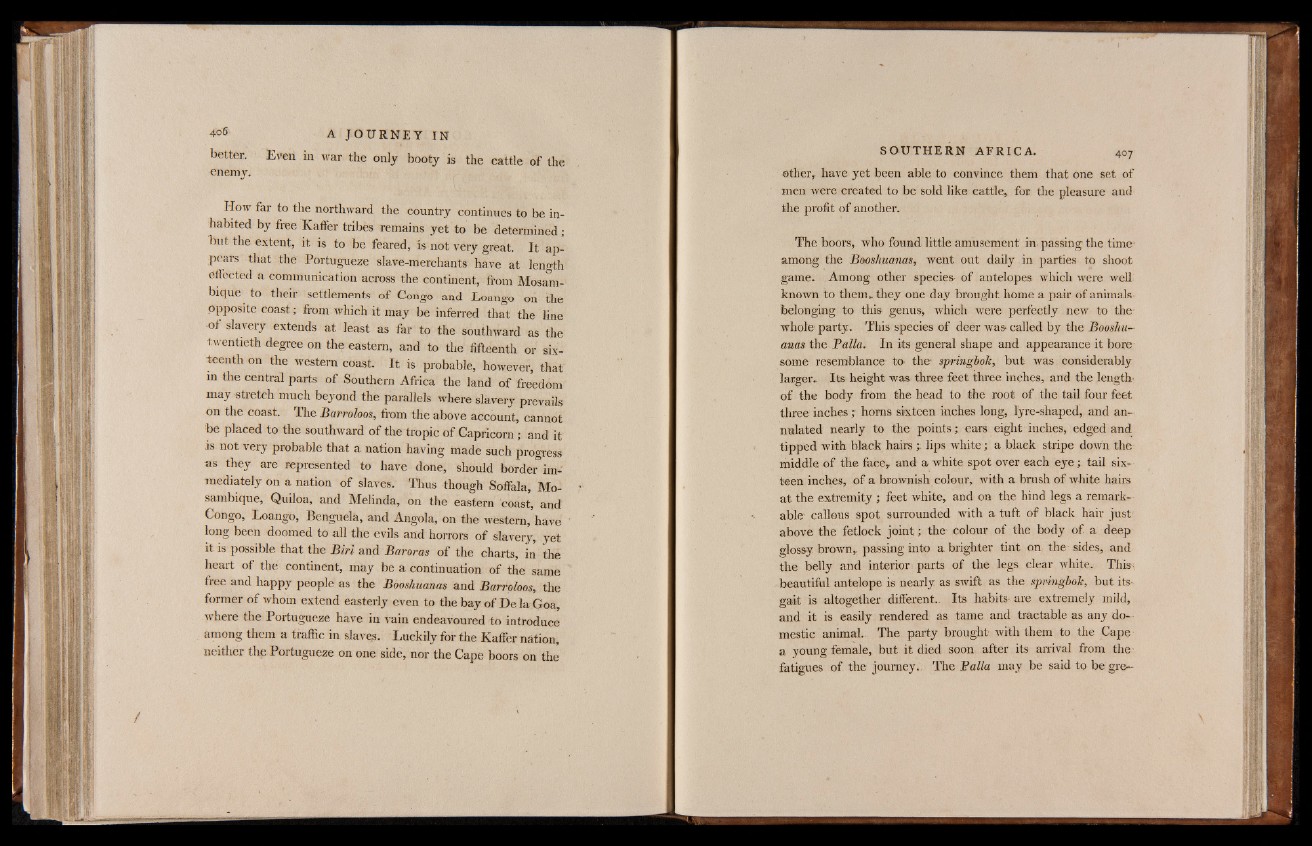
4°<> A J O U R N E Y IN
better. Even in war the only booty is the cattle of the
enemy.
How far to the northward the country continues to be inhabited
by free Kaffer tribes remains yet to be determined;
but the extent, it is to be feared, is not very great. I t appears
that the Portugueze slave-merchants have at length
effected a communication across the continent, from Mosam-
bique to their settlements of Congo and Loango on the
opposite coast; from which it may be inferred that the line
of slavery extends a t least as far to the southward as the
twentieth degree on the eastern, and to the fifteenth or sixteenth
on the western coast. I t is probable, however, that
in the central parts of Southern Africa the land of freedom
may stretch much beyond the parallels where slavery prevails
on the coast. The Barroloos, from the above account, cannot
be placed to the southward of the tropic of Capricorn; and it
is not very probable that a nation having made such progress
as they are represented to have done, should border” immediately
on a nation of slaves. Thus though Soffala, Mo-
sambique, Quiloa, and Melinda, on the eastern coast, and
Congo, Loango, Benguela, and Angola, on the western, have
long been doomed to all the evils and horrors of slavery, yet
it is possible that the Biri and Baroras of the charts, in the
heart of the continent, may be a continuation of the same
free and happy people as the Booshuanas and Barroloos, the
former of whom extend easterly even to the bay of He la Goa,
where the Portugueze have in vain endeavoured to introduce
among them a traffic in slaves. Luckily for the Kaffer nation,
neither the Portugueze on one side, nor the Cape boors on the
other, have yet been able to convince them that one set of
men were created to be sold like cattle, for the pleasure and
the profit of another.
The boors, who found little amusement in passing the time-
among the Booshuanas, went out daily in parties to shoot
game. Among other species- of antelopes which were well
known to them, they one day brought home a pair of animals
belonging to this genus-, which were perfectly new to the-
whole- party. This species of deer was- called by the Booshuanas
the Balia. In its general shape and appearance it bore
some resemblance to- the- springbok, but was considerably
larger. Its height was three feet three inches, and the length'
of the body from the head to the roof of the tail four feet
three incheshorns sixteen inches long, lyre-shaped, and an-
nmlated nearly to the points; ears eight inches, edged and
tipped with black hairs ;: lips white; a black stripe down the
middle of the face, and a white spot over each eye; tail sixteen
inches, of a brownish colour, with a brush of white hairs
at the extremity ; feet white, and 011 the hind legs a remarkable
callous spot surrounded with a tuft of black hair just
above the fetlock jo in t; the- colour of the body of a deep
glossy brown, passing into a brighter tint on the-sides, and
the belly and interior parts of the legs clear white. This
beautiful antelope is nearly as swift as the springbok, but its-
gait is altogether different.. Its habits-are extremely mild,
and it is easily rendered as tame and tractable as any domestic
animal.. The party brought with them to the Cape
a young female, but it died soon after its arrival from the
fatigues of the journey.. The Falla may be said to be gre